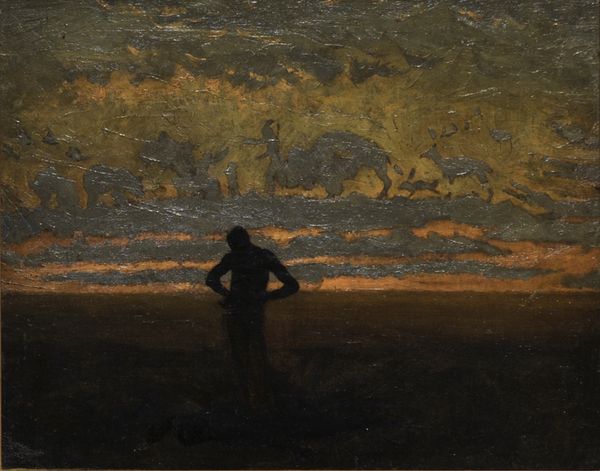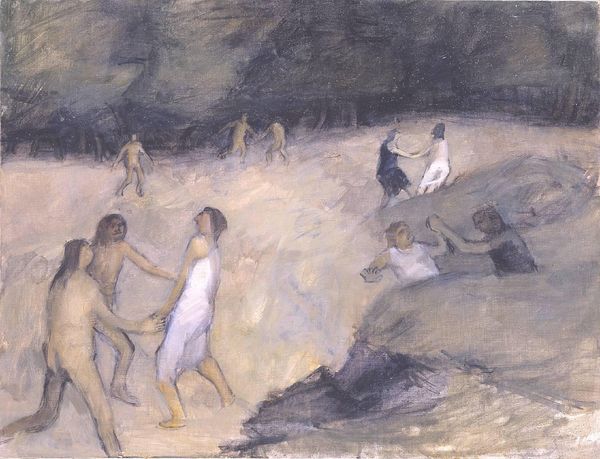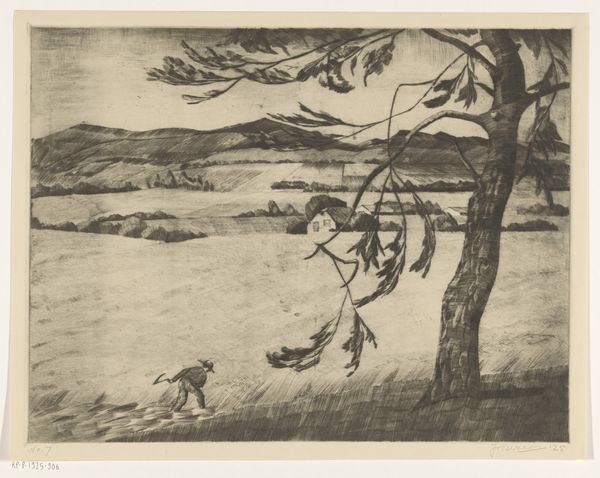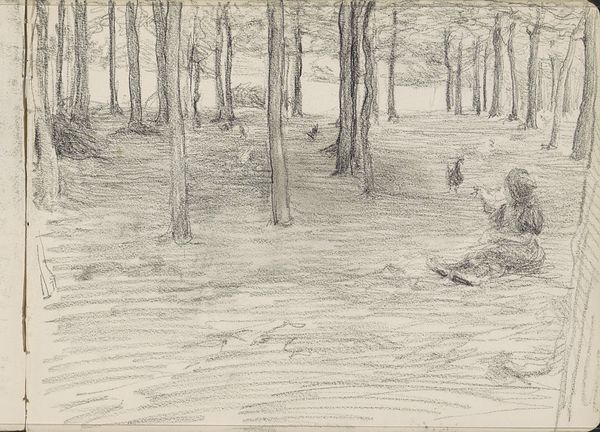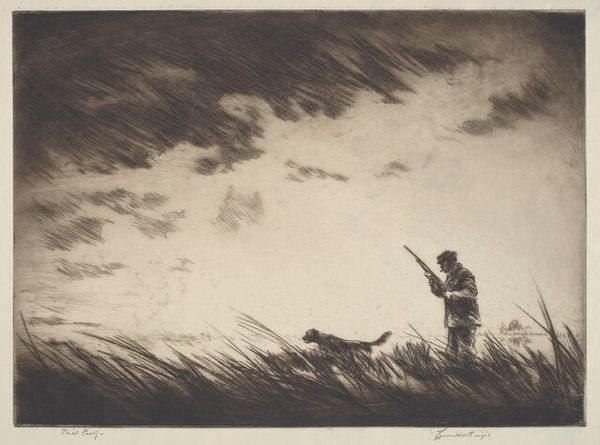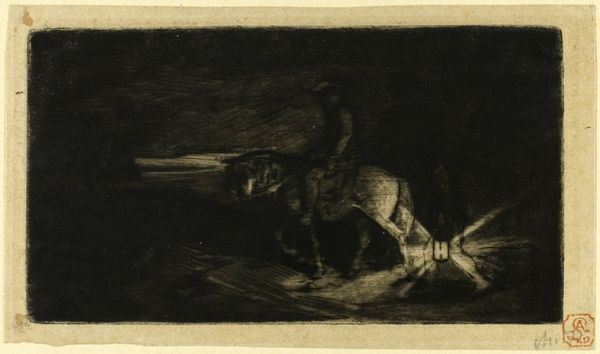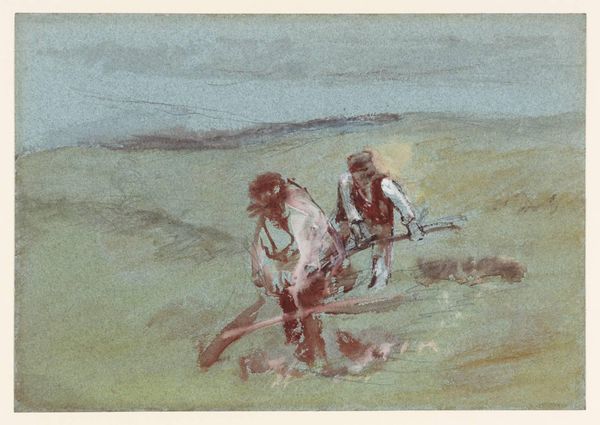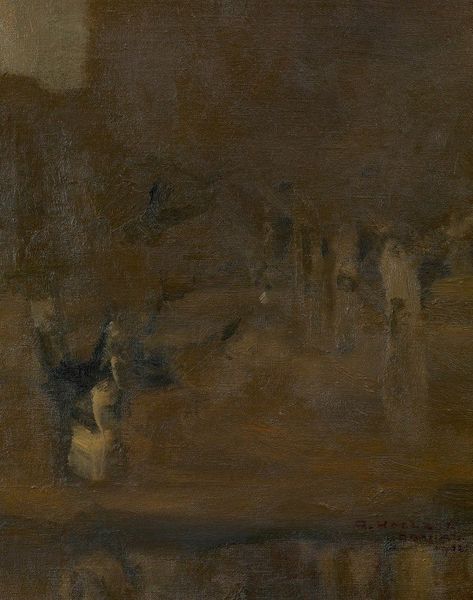
Copyright: Public Domain: Artvee
Editor: This is Frederic Remington’s 1892 drawing ‘Huskie’ Dogs on the Frozen Highway,’ and it appears to be made with pencil and ink. It depicts a person racing with a dogsled team across a snowy landscape under a full moon. What I immediately notice is the incredible sense of movement. The dogs, the driver—everything feels like it’s blurring forward. What do you see in this piece? Curator: This piece sings to me of endurance and the connection between humans and animals, visualized through deeply-held symbols of transit. Notice how Remington renders the dogs. Their musculature isn’t just about physical strength; it's a testament to their spirit. Each dog, even silhouetted, embodies a drive to forge ahead, echoing the determination of the driver. Do you see how the light of the moon seems less like illumination and more like a spotlight on their shared journey? Editor: I do, yes! The moonlight definitely sets a stark tone. Is that deliberate, in terms of its symbolism? Curator: Consider the moon as a recurring symbol throughout history and various cultures. Often, it signifies guidance, even through periods of darkness or uncertainty. Remington may be subtly communicating ideas of perseverance and resilience. Furthermore, in art history, light piercing through darkness may underscore concepts of hope and direction. The dogs, the driver, the sled -- all become allegorical figures within a larger narrative of the American frontier spirit. What emotional impressions do these visual choices have on you as a viewer? Editor: That connection to hope, yes, I think I see that. The determination seems more important. Thanks, I had not noticed that. Curator: Thinking about it, these symbols weave a more complex story. Hopefully, our viewers are also contemplating the layers present in Remington's choice of symbolism, and it will connect their own life and experience to the artwork.
Comments
No comments
Be the first to comment and join the conversation on the ultimate creative platform.
